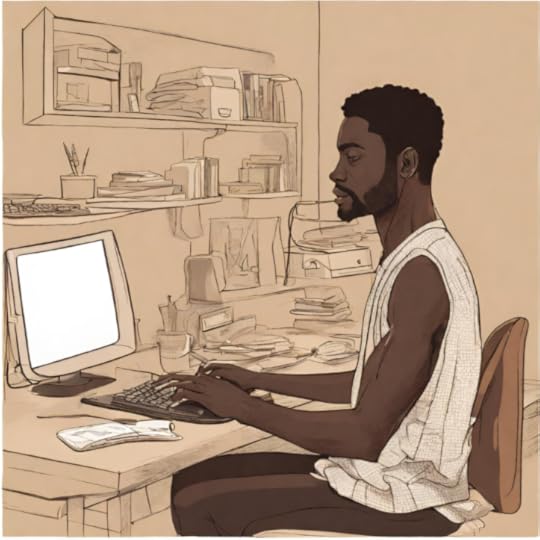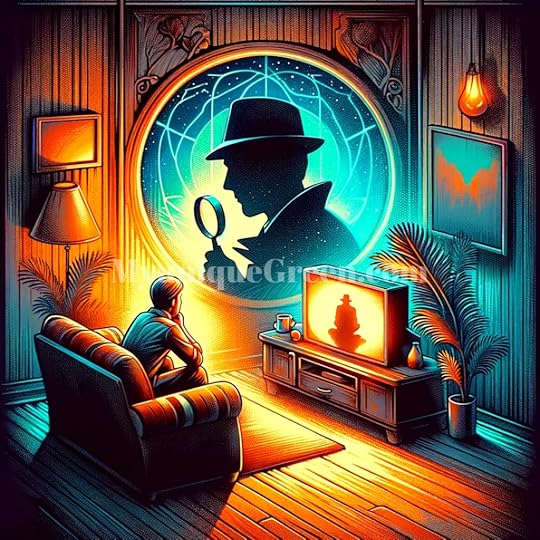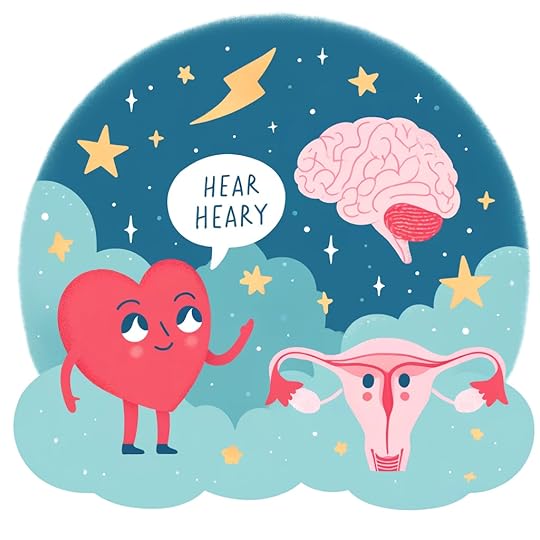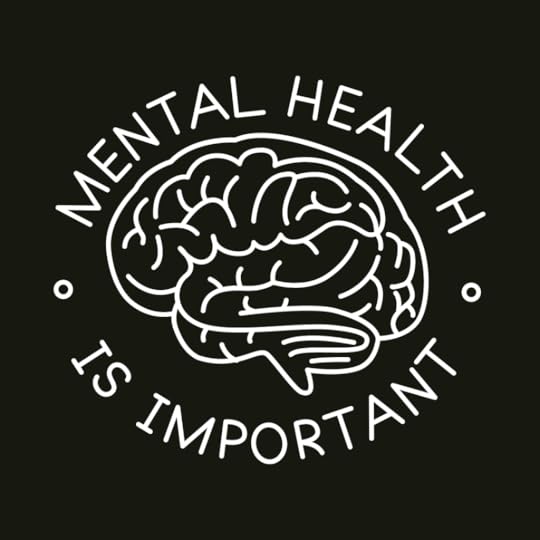Myunique C. Green's Blog, page 4
June 13, 2024
Charting the Course: Tips for Navigating the World of Traditional Publishing
Stepping into the world of traditional publishing can feel like you’re embarking on an epic adventure – it’s thrilling, a bit scary, and absolutely packed with learning curves. But don’t worry, I’ve been there, and I’m here to share the map I wish I had when I started. Together, we’ll unravel the mysteries of traditional publishing. We’ll talk about why nailing your query letter matters, the secret sauce of comparative titles, and more. So, grab a cup of coffee (or your favorite writing beverage), and let’s dive into this journey.
Understanding Traditional PublishingAlright, let’s talk traditional publishing. It’s like the old school, classic way of getting your book into the hands of readers. Imagine a big publishing house turning your manuscript into a beautifully printed book, handling all the selling and marketing stuff. But to get there, you often need a wingman (or wingwoman) in the form of a literary agent. These agents are your golden ticket to the publishing world – they know the right people, understand the nitty-gritty of contracts, and can really champion your book.

The cool part? You get a team of pros editing your book, making it look pretty, and shouting about it from the rooftops. The not-so-cool part? It’s super competitive. Publishers want books they believe will fly off the shelves. So as an author, it means getting your manuscript polished to perfection and understanding what makes a book sell.
Getting your head around traditional publishing is like learning the rules of a new game. It’s about knowing who does what and making sure your book fits right in with what the industry is looking for. Stick with me, and I’ll walk you through how to prep your manuscript and make literary agents sit up and take notice, especially with those all-important comparative titles.
Preparing Your ManuscriptOkay, let’s get real about your manuscript. This baby is your masterpiece, your brainchild, and it deserves to be the best version of itself before it meets the world. Think of it like prepping for a first date – you want to make a great impression. So, first thing’s first: edit, edit, edit. Don’t just rely on your spellcheck. Read your manuscript out loud, get feedback from writer friends or join a writing group. You want this gem to be as polished as it can be.
And remember, every detail counts. Is your opening line a hook that grabs the reader? Does your story flow smoothly? Are your characters as real as your quirky cousin Bob? Fine-tuning these elements can make a world of difference. It’s like dressing up your story in its Sunday best.
The Art of Querying Literary AgentsNow, onto the art (and yes, it’s an art) of querying literary agents. Finding the right agent is like finding a dance partner – you want someone who gets your style and can groove with it. Start by doing your homework. Research agents who represent books similar to yours. Check out resources like Writer’s Market or QueryTracker. You’re looking for someone who’s going to be as excited about your book as you are.

Writing a query letter is like crafting a mini-masterpiece. You’ve got one page to make your book (and you!) shine. Start with a killer opening that hooks them in, give them a tantalizing taste of your story, and sprinkle in a bit of your own writerly charm. And yes, you’ll need a synopsis too. Think of it as your book’s elevator pitch – intriguing, clear, and leaving them wanting more.
Remember, agents are people too. They’re looking for a connection to your story and to you as an author. Be professional, but let your personality shine through. And don’t get discouraged by rejection – it’s just part of the author’s journey.
The Role of Comparative Titles in QueryingComparative titles – they’re not just bookish name-dropping, they’re your secret weapon in the querying battlefield. Think of them as your book’s relatives, the ones that show where it fits in the family of published works. Picking the right comps is like saying, “Hey, if you liked X and Y, you’re going to want to read my book!”
So, how do you pick these literary cousins? Look for books that share your book’s vibe, genre, audience, or themes. But be smart about it. Don’t just pick the latest bestsellers or classics – that’s like comparing yourself to Shakespeare, and who needs that kind of pressure? Find titles that are recent, but not too obscure. The goal is to show agents you know the market and where your book fits in it.
Using comparative titles effectively in your query can be a game-changer. It helps agents quickly understand your book’s potential appeal. It’s like giving them a shortcut to ‘get’ your book. Plus, it shows you’re not just a writer but a reader too, someone who knows and loves the world of books.
Resources for Traditional PublishingNavigating the traditional publishing world can feel like trying to find your way through a maze without a map. But fear not! There are some fantastic resources out there to guide you. Books like “The Writer’s Market” or “Guide to Literary Agents” are goldmines of information. They’re like your personal GPS through the publishing world.

Online, communities like Writer’s Digest, Absolute Write, and Manuscript Wishlist can be lifesavers. They’re not just information hubs; they’re like coffee shops where writers hang out, share stories, and support each other. And don’t forget about writing conferences and workshops – they’re great places to learn, network, and maybe even meet agents in person.
Make these resources your allies. Absorb the wisdom they offer, and use it to refine your strategy. Remember, knowledge is power, especially in the world of publishing.
Final Tips and Best PracticesAlright, before we wrap up, here are some parting nuggets of advice from one author to another. First, be patient. Traditional publishing is a marathon, not a sprint. It takes time, persistence, and a thick skin. Rejections? They’re not failures; they’re stepping stones. Every no gets you closer to that yes.
Stay true to your voice. It’s easy to get lost in the sea of advice and market trends. While it’s important to be aware of the market, don’t lose what makes your writing uniquely yours. That’s your superpower.

Network, network, network. The writing community is wonderfully supportive. Connect with other writers, join groups, participate in forums. These connections can be a source of encouragement, advice, and sometimes, they can even lead to opportunities.
Lastly, never stop writing. Keep honing your craft. Work on your next project. The more you write, the better you get, and the more you have to offer the world.
Embarking on the traditional publishing path is a brave and exciting journey. It’s filled with challenges, but the rewards – seeing your book on a shelf, sharing your story with the world – are incomparable. Remember, every published author was once where you are now. Keep learning, keep writing, and above all, keep believing in yourself. Your story matters. Now go tell it to the world.
June 8, 2024
A Day in the Sun: Top Outdoor Activities for a Perfect Summer

Ah, summer! That glorious time of year when the sun’s rays extend an open invitation to embrace the great outdoors. Whether you’re planning a day out with the family, looking for adventure with friends, or setting off solo to recharge, there’s no shortage of activities to fill your days with joy and sunshine. In this post, I’m diving into some of my top picks for outdoor activities that promise a perfect summer day, tailored for families, young adults, and solo travelers alike.
For Families: Creating Memories Under the SunPicnics and Park Adventures
Is there anything more quintessentially summer than a family picnic in the park? Grab a blanket, pack a basket with your favorite snacks, and head to the nearest green space. While the kids tumble around in a game of frisbee or hide-and-seek, adults can bask in the sun or join in the fun. Don’t forget to bring along some outdoor toys, storybooks, or a portable speaker for a background summer playlist. It’s these moments of laughter and leisure that create lifelong memories.

Beach Day Out
A day at the beach is an all-time favorite for families. Build grand sandcastles, paddle in the shallows, or simply soak up the beach ambiance with a good book as the kids play. Safety first, though – make sure to apply plenty of sunscreen and keep an eye on the youngsters by the water. Beach volleyball, sand art competitions, or a simple game of catch can keep everyone entertained and active throughout the day.
For Young Adults: Summer Vibes and AdventuresOutdoor Music Festivals
Summer and music festivals go hand in hand, offering a blend of live music, dance, and cultural experiences under the open sky. Whether it’s a local band playing in the park or a weekend-long festival, there’s something magical about enjoying live music with friends in the summer breeze. Remember to stay hydrated, wear comfortable shoes, and embrace the communal spirit of music and togetherness.

Hiking and Camping Trips
For those who crave a bit more adventure, a hiking or camping trip can be the perfect escape. Explore local trails or venture to new heights in national parks. Hiking is not just great exercise; it’s a way to connect with nature and witness breathtaking views. Extend the adventure with a camping trip, where nights are spent under the stars and mornings begin with the crisp dawn air. It’s an unparalleled experience that combines challenge, tranquility, and bonding with friends.
For Solo Travelers: Find Your Zen in NatureSolo Kayaking or Paddleboarding
There’s a unique kind of peace that comes from being on the water alone. Kayaking or paddleboarding offers a serene yet exhilarating experience, perfect for solo travelers seeking tranquility or a new perspective. Glide over calm waters, navigate through natural landscapes, and let the rhythm of paddling soothe your soul. It’s a wonderful way to clear your mind and enjoy the simplicity of nature.

Photography Walks
Embrace the art of slow travel with a photography walk through nature. Whether it’s the bustling streets of a summer city or the quiet trails of a local park, capturing moments through your lens allows you to see the world in new lights. It’s not just about the photos; it’s about immersing yourself in the environment and noticing the small, beautiful details of life that often go overlooked.
Your Summer, Your AdventureThis summer, challenge yourself to step outside your comfort zone and try something new, whether it’s with family, friends, or on your own. Each day holds the promise of a new adventure, a story to tell, and memories to cherish. So, what are you waiting for? Dive into the sun-filled days ahead and make this summer one for the books. And when you do, don’t forget to share your stories and inspire others to explore the boundless joys of summer.
June 4, 2024
Unlocking Your Creative Writing Potential: Tips for Beginners
Have you ever felt the urge to pen down a whirlwind of thoughts, only to find yourself staring at a blank page, unsure where to start? Creative writing, an art as old as time, is not just about having a way with words; it’s about finding the spark that turns thoughts into narratives. Let this be your guide to not only finding that elusive inspiration but also nurturing it, especially tailored for you, the budding writer. Whether it’s a novel, a short story, or a diary entry, the journey starts with understanding and harnessing inspiration. So, let’s dive in!
Understanding Inspiration
What exactly is inspiration in the realm of creative writing? It’s that sudden burst of creativity, an unexpected idea that seems to come from nowhere. But here’s the truth – inspiration isn’t as whimsical as it’s often portrayed. It doesn’t always strike like lightning. More often than not, it’s the result of a conscious effort to engage with the world around us in a curious and open-minded way.

Many beginners hold the belief that they should wait for inspiration to strike. However, the secret lies in actively seeking it. It’s about being observant, about finding the extraordinary in the ordinary. The chirping of birds, an overheard conversation, a nostalgic scent, or even a vivid dream can be the seeds of a great story.
Creating a Habit of Writing
One of the best pieces of advice for aspiring writers is to write regularly. Inspiration thrives on habit. Setting a daily writing schedule, even if it’s just a few minutes each day, can work wonders. It’s like muscle training – the more you write, the stronger your writing skills become.
Discipline plays a crucial role in this. There will be days when writing feels like a chore, but pushing through those moments can often lead to the most rewarding breakthroughs. Remember, every word you write is a step closer to honing your craft.
Finding Your Unique Sources of Inspiration

Inspiration is deeply personal. What ignites creativity in one person might not work for another. It’s important for you to explore and identify what fuels your imagination. Nature, with its endless beauty and diversity, has been a timeless muse for many writers. Others find inspiration in music, letting melodies and lyrics evoke emotions and images. Art, in its many forms, can also spark ideas.
Reading widely is another key to unlocking inspiration. It exposes you to different styles, themes, and genres. Keep a notebook handy to jot down any thoughts or ideas that come to you during these exploratory phases. Remember, there is no right or wrong source of inspiration; it’s all about what resonates with you.
Overcoming Writer’s Block
Even the most seasoned writers encounter the dreaded writer’s block. When you hit this wall, don’t despair. It’s just another part of the creative process. A useful strategy is to step away from your work for a bit. Engage in a different activity that relaxes your mind. Sometimes, a change of scenery or a simple walk can reignite your creative engine.
Another approach is to write through the block. Set a timer for 10 minutes and write anything that comes to mind, without worrying about quality or coherence. This free-writing exercise can surprisingly lead you to interesting and unexpected ideas.
Section 5: Utilizing Writing Prompts and Exercises
Writing prompts and exercises are fantastic tools for sparking creativity. They give you a starting point from which your imagination can take flight. Here are a couple of simple prompts to get you started:
“As the door closed, she realized that…”“The strangest thing about the town was…”
These prompts are intentionally open-ended, allowing you to take your story in any direction. You can also try rewriting a familiar fairy tale in a modern setting or from a different character’s perspective. Such exercises not only inspire but also help develop your narrative skills.
Creative writing is a journey filled with ups and downs, but the joy it brings is incomparable. Remember, every writer has a unique voice and style, and the world is eager to hear yours. Keep practicing, keep exploring, and most importantly, keep writing. Your next great idea could be just around the corner!
May 29, 2024
Anxiety: A Silent Shadow in Our Lives
I’m committed to doing my part to spread awareness this month. Today, we’re focusing on a silent shadow that follows many of us – anxiety. Often misunderstood and easily overlooked, anxiety can be a daily struggle, especially for young adults navigating the complexities of modern life. From academic pressures to the uncertainties of the future, anxiety finds its roots in various aspects of our lives. But there’s good news – it’s manageable. In this post, we’ll explore practical, actionable tips to help you cope with anxiety. Whether you’re experiencing mild nervousness or overwhelming worry, these strategies are designed to empower you and improve your mental well-being. So, let’s dive in and unravel the intricacies of anxiety together, taking steps towards a more peaceful and balanced life.
Understanding AnxietyWhat is Anxiety and Why Does it Matter?
Anxiety is more than just feeling stressed or worried. It’s a persistent sense of unease, often accompanied by physical symptoms like a racing heart, sweating, or restlessness. While it’s a normal and often healthy emotion, it becomes a concern when these feelings are constant and overwhelming, affecting daily life.
For young adults, anxiety can be particularly challenging. This life stage is full of transitions – from high school to college, college to career, and beyond. Each step brings its own set of pressures, from academic performance to social relationships and career decisions. The digital age adds another layer, with social media often portraying an unrealistic standard of living and success. It’s no wonder anxiety is a common experience among young adults.
Recognizing anxiety is the first step towards managing it. Symptoms can vary widely, but common ones include constant worrying, trouble concentrating, insomnia, and physical symptoms like headaches or digestive issues. Understanding these signs can help in identifying anxiety early and taking steps to address it.
Coping StrategiesEmpowering Yourself Against Anxiety
Managing anxiety isn’t a one-size-fits-all solution. It involves a range of strategies that cater to different aspects of your life. Here are some practical ways to cope with anxiety:

1. Mindfulness and Relaxation Techniques: Mindfulness is about living in the moment and accepting it without judgment. Practices like deep breathing exercises, meditation, and yoga can significantly reduce anxiety symptoms by calming the mind and body. Try starting your day with a few minutes of deep breathing or meditation. There are numerous apps and online guides to help beginners. Even simple activities like enjoying a quiet walk or listening to calming music can be forms of mindfulness that help center your thoughts away from anxiety.
2. Physical Activity and Diet: Exercise is a powerful anxiety reliever. It releases endorphins, natural brain chemicals that enhance your sense of well-being. You don’t need to engage in intense workouts; regular activities like walking, jogging, or yoga can make a huge difference. Likewise, a balanced diet plays a crucial role. Foods rich in omega-3 fatty acids, like salmon, and those high in antioxidants, like berries, can help regulate mood and alleviate anxiety. Also, limiting caffeine and alcohol, which can exacerbate anxiety symptoms, is a smart move.
3. Sleep Hygiene: A good night’s sleep is essential for managing anxiety. Establish a regular sleep routine by going to bed and waking up at the same time each day. Make your bedroom a calming environment – dark, quiet, and cool. Avoid screens at least an hour before bed, as the blue light can disrupt your sleep cycle. If you find your mind racing at bedtime, try relaxation techniques like deep breathing or gentle stretches to help ease into sleep.

4. Social Support and Communication: Talking about your feelings can be a huge relief. Don’t hesitate to reach out to friends, family, or even a support group. Sharing your experiences and hearing others can provide comfort and different perspectives. Sometimes, just knowing you’re not alone in how you feel can be incredibly reassuring. Participating in community activities or hobbies can also provide a sense of belonging and an outlet for stress.
5. Professional Help and Therapy: If anxiety interferes significantly with your life, seeking professional help is a strong and positive step. Therapists can provide coping strategies tailored to your individual needs. Treatments like cognitive-behavioral therapy (CBT) are particularly effective for anxiety. Don’t be afraid to reach out to a counselor or mental health professional. Remember, seeking help is a sign of strength, not weakness.
Resources and ToolsNavigating Anxiety with Helpful Resources
Dealing with anxiety is a journey, and having the right resources can make it smoother. Here are some valuable tools and resources:
Mental Health Apps: Apps like Headspace and Calm offer guided meditation and mindfulness exercises. For more personalized support, Talkspace and BetterHelp connect you with therapists online.Websites: Websites like the Anxiety and Depression Association of America (ADAA) provide a wealth of information on anxiety disorders, coping strategies, and finding support.Hotlines: In moments of acute anxiety or crisis, hotlines can be lifesavers. The National Alliance on Mental Illness (NAMI) Helpline (1-800-950-NAMI) offers free, confidential support.Books: Consider reading books like “The Anxiety and Phobia Workbook” by Edmund Bourne for in-depth strategies.Local Support Groups: Many communities have support groups for people with anxiety disorders. Check local community centers or hospitals for information.Remember, these resources are here to complement the coping strategies and professional help, not replace them.
You Are Not Alone in This Battle
As we conclude, remember that managing anxiety is a journey, and it’s okay to have ups and downs. The strategies we’ve discussed – mindfulness, physical activity, proper diet, sleep hygiene, social support, and seeking professional help – are your tools in this journey. Utilize the resources available and remember, you’re not alone in this. Each step, no matter how small, is progress. During Mental Health Awareness Month and beyond, let’s acknowledge our struggles, share our stories, and support each other. Your mental well-being is worth every effort. You’ve got this!
May 23, 2024
Finding Comfort in the Uncomfortable
In a world where comfort is often found in the warm embrace of the familiar and the gentle, there exists an intriguing paradox: a significant number of us find solace in the chilling narratives of true crime shows. This phenomenon, at first glance, seems counterintuitive. Why would tales of crime, often harrowing and disturbing, serve as a source of comfort? Yet, the soaring popularity of true crime documentaries, podcasts, and television series suggests that for many, these stories hold a peculiar, almost paradoxical appeal.

In exploring this curious corner of entertainment, we delve into a space where fear intertwines with fascination, and terror dances with curiosity. True crime stories offer more than just a glimpse into the darker side of humanity; they present a complex tapestry of psychology, society, and the human condition. This blog post aims to unravel the reasons behind the comforting allure of true crime, examining the psychological underpinnings and emotional responses that draw us to these stories, despite—or perhaps because of—their unsettling nature.
The Psychology Behind the FascinationAt the core of our fascination with true crime lies a mix of psychological factors that draw us towards these often grisly tales. One primary element is morbid curiosity—a natural human tendency to be intrigued by the macabre and the forbidden. True crime stories allow us to explore the darkest parts of human nature from a safe distance. By engaging with these stories, we satisfy a deep-seated curiosity about the extremes of human behavior without exposing ourselves to real danger.

Another psychological aspect is the desire to understand the human psyche, especially that of individuals who commit heinous acts. These stories often provide detailed backgrounds and psychological profiles of criminals, offering insights into their motivations and thought processes. This understanding can paradoxically make us feel safer. Knowing the ‘why’ behind criminal acts gives a sense of predictability and control in a world that often seems chaotic and random.
True crime also taps into our innate survival instincts. By learning about crimes, we subconsciously equip ourselves with knowledge that could be vital for self-protection. It’s a modern iteration of the age-old practice of sharing stories of danger to teach lessons about survival. In this way, indulging in true crime becomes a form of preparation, a way to mentally simulate scenarios and reinforce our own safety strategies.
Lastly, true crime satisfies a need for justice. Many true crime stories follow the arc of crime detection, trial, and resolution, offering a sense of closure. In a world where justice often seems elusive, these narratives provide a clear-cut resolution that can be deeply satisfying. They reinforce the belief that, despite the chaos, there is order and justice in the world.
True Crime as a Coping MechanismThe allure of true crime extends beyond mere curiosity and enters the realm of emotional coping. For many, these stories provide a unique form of solace in dealing with anxiety and stress. This might seem paradoxical, given the often unsettling nature of true crime, but the phenomenon is rooted in psychological coping mechanisms.

One way true crime helps is through the concept of ‘controlled fear.’ Unlike real-life threats, the fear experienced while engaging with true crime is under our control. We can turn off the TV, pause the podcast, or close the book when it becomes too intense. This control allows us to experience fear in a safe environment, which can be therapeutic. It’s a way of facing and managing fears in a controlled setting, thus helping to reduce feelings of anxiety in everyday life.
Moreover, true crime stories often follow a narrative where chaos is followed by order, and evil is eventually overcome by good. For individuals living in a world that can feel increasingly unpredictable and threatening, these narratives offer a sense of justice and orderliness. They provide a psychological space where one can see the triumph of morality and law, which can be immensely reassuring.
Additionally, for some, engaging with true crime can be a way of processing personal trauma. By seeing stories of survival and justice, individuals who have experienced trauma can find a form of indirect validation of their feelings and experiences. It’s a way of confronting personal fears and traumas in a context that is removed from one’s own life, providing a safe space for emotional exploration and healing.
True crime also serves as a reminder that one’s own life, despite its challenges, may not be as tumultuous or dangerous. It can put personal problems into perspective, serving as a bizarre form of gratitude for the relative safety and normalcy of one’s own life.
Community and ConnectionThe true crime genre has fostered a unique and passionate community of followers. This aspect of true crime fandom is significant in understanding why these stories can be oddly comforting. The sense of community and connection found among true crime enthusiasts provides a form of social bonding that is integral to human well-being.

True crime podcasts, forums, and social media groups create spaces where fans can discuss cases, share theories, and express their feelings about the stories they encounter. These platforms allow for the exchange of ideas and information, deepening the engagement with the content. For many, being part of these communities offers a sense of belonging. It’s a shared interest that connects people from diverse backgrounds, creating a common ground where they can interact and bond.
Furthermore, these communities often engage in discussions that go beyond the cases themselves. They delve into broader topics such as criminal justice, mental health, and societal issues, leading to meaningful conversations and a deeper understanding of complex subjects. This intellectual engagement can be both stimulating and comforting, as it provides a sense of purpose and contributes to personal growth.
The communal aspect of true crime also allows for collective processing of emotions. When a story is particularly distressing, discussing it with others who understand and share the fascination can be comforting. It’s a way of validating each other’s feelings and coping with the heavy emotions that true crime content can evoke.
Moreover, for some, being part of the true crime community is a way of honoring the victims and their stories. It’s about seeking justice and keeping the memory of the victims alive, which can be a deeply emotional and fulfilling experience.
The Role of Narratives and StorytellingThe compelling nature of storytelling in true crime plays a crucial role in its comforting appeal. True crime stories are not just a collection of facts and figures; they are narratives crafted with the intent to engage and often, to educate. The way these stories are told can significantly impact our psychological and emotional responses.

Narratives in true crime often present a journey from chaos to order, from uncertainty to resolution. This structure is inherently satisfying to the human psyche. We crave stories where despite the odds, justice prevails, and order is restored. This narrative arc can provide a sense of closure that is often lacking in real life. It reassures us that, in the end, there is a resolution, even if it’s just within the confines of the story.
Moreover, storytelling in true crime humanizes the events. It goes beyond the sensational headlines and delves into the lives of the people involved, both victims and perpetrators. This human aspect evokes empathy and emotional engagement, making the stories more relatable and impactful. It’s not just about understanding what happened, but also about connecting with the people involved on a human level.

True crime stories also often involve a puzzle-solving element. They challenge the audience to think critically, piece together clues, and understand complex situations. This intellectual engagement can be stimulating and rewarding. It gives the audience a sense of being part of the investigation, adding an interactive layer to the experience.
Additionally, the storytelling in true crime often highlights societal issues and injustices. It can be a platform for advocating change and raising awareness about important topics like criminal justice reform, mental health, and victim rights. This aspect can provide a sense of purpose and empowerment to the audience, making them feel like they are part of something bigger than just entertainment.
ConclusionThe phenomenon of finding comfort in true crime narratives is a complex interplay of psychological, emotional, and social factors. It challenges the conventional notion of what constitutes comfort-viewing, revealing a deeper, multifaceted relationship between audiences and these dark, often unsettling stories.
Psychologically, true crime satisfies our morbid curiosity and helps us feel a sense of control over our fears. It provides insights into the human psyche and criminal behavior, offering a form of mental preparedness. Emotionally, true crime narratives allow for controlled fear experiences, serving as a coping mechanism for real-world anxieties. They also provide a sense of closure and order in a world where such outcomes are not always guaranteed.

The social aspect of true crime fandom cannot be overstated. The sense of community and connection found in true crime groups offers emotional support and a space for intellectual engagement. These communities allow for collective processing of the stories and contribute to a feeling of belonging among fans.
Furthermore, the role of storytelling in true crime is key to its appeal. These narratives offer more than just the recounting of events; they provide a journey that resonates on a human level. They stimulate the mind and often highlight broader societal issues, offering a sense of engagement and purpose.
In conclusion, the comfort found in true crime shows is a testament to the complexity of human emotions and interests. It underscores our capacity to find solace in unlikely places, to connect with others over shared fascinations, and to seek understanding in the midst of chaos. As we continue to navigate a world rife with uncertainties, true crime stories offer a unique lens through which we can explore, understand, and perhaps find a strange sense of comfort in the darker aspects of life.
May 16, 2024
Unleashing the Power of a Prologue
Ever pondered over the first few pages of a novel and wondered, “What magic lies here?” That, my friends, is the allure of a prologue – a narrative’s secret sauce. Think of it as the appetizer before a grand feast, setting the stage and whetting the appetite for the story ahead. Whether you’re a newbie weaving your first tale or a seasoned author, mastering the art of the prologue can transform your storytelling. So, grab your quills (or laptops), and let’s dive into the do’s and don’ts of crafting a prologue that captivates from the get-go!
Understanding ProloguesA prologue, in the realm of storytelling, is like a gateway into the world you’ve created. It’s not just any opening chapter; it’s a standalone section that precedes the main story. Its purpose? To provide a snapshot that sets the tone, context, or background necessary for the narrative that follows.

Now, don’t confuse a prologue with a foreword. A foreword is an introduction, usually not written by the author, that discusses the significance of the book, often from an outside perspective. A prologue, on the other hand, is an integral part of your story, penned by you, the author, to draw readers into the fictional universe you’ve crafted.
Understanding this distinction is crucial. The prologue is your chance to make a first impression, to lay down the breadcrumbs that lead readers deeper into the heart of your tale.
The Do’s of Writing a Prologue1. Set the Tone of Your Story: Your prologue is the first taste readers get of your writing style and the world you’ve created. Use it to establish the mood. Is your story a heart-pounding thriller, a deep historical narrative, or a whimsical fantasy? Let the prologue be the lens through which readers view the rest of your story.
2. Create Intrigue or Suspense: A compelling prologue hooks the reader. It raises questions that beg answers, encouraging readers to turn the page. Think of it as laying down a trail of narrative breadcrumbs. Just a hint of mystery or a dash of danger can go a long way in gripping your audience.
3. Provide Important Background Information: Sometimes, your story needs a setup that the main plot can’t accommodate. The prologue is perfect for this. It can give a glimpse of historical context, a past incident, or a character’s backstory that is pivotal to understanding the upcoming narrative.
4. Introduce Key Themes or Motifs: Prologues can be a beautiful way to introduce recurring themes or symbols that will echo throughout your book. This subtle art of foreshadowing can enrich the reader’s experience, making the unfolding of the plot more meaningful.

Good Prologue Example: Imagine a prologue that opens in the midst of a mysterious ritual in an ancient world, hinting at a powerful artifact’s existence. It’s succinct, sets a foreboding tone, and leaves readers with questions about the artifact’s relevance. This prologue succeeds because it intrigues without overwhelming, offering just enough to lure readers into the story.
This prologue aims to set a mystical and suspenseful tone, introducing key elements like the ancient city, the mysterious amulet, and a sense of impending change.
Under the starlit sky of the ancient city of Eridu, a shadow moved stealthily across the ziggurat’s stone tiers. The air was thick with the scent of myrrh, and distant chants of priests resonated through the night. At the summit, beneath the gaze of the crescent moon, stood the high priestess, her eyes closed in deep communion.
In her hands, she cradled a relic, old as time itself – a small, unassuming amulet, yet pulsating with an energy unseen. Legends spoke of its power, capable of bending the will of gods, yet lost to the sands of time until this fateful night.
Below, the city slept, unaware of the ritual that would decide its fate. For in the heart of Eridu lay secrets, buried deep beneath the earth – secrets that could awaken a forgotten magic or unleash an age-old curse.
As the priestess whispered ancient incantations, the amulet glowed, its light a beacon in the darkness. This night would be remembered in the annals of Eridu, a night when the veil between worlds thinned, and the course of history teetered on the edge of a blade.
In the streets below, a lone figure watched, the fate of Eridu unknowingly resting in their hands.
Remember, a prologue should be like a key to a secret door, unlocking something unique and essential for the journey ahead. It’s not just about starting your story; it’s about starting it with purpose.
The Don’ts of Writing a Prologue1. Don’t Overload with Irrelevant Details: While setting the stage is crucial, a prologue overloaded with unnecessary details can deter readers. Keep it concise and ensure that every element contributes to the story or the atmosphere you’re trying to create.
2. Don’t Spoil the Main Plot: The art of a prologue lies in piquing interest, not in revealing key plot points. Avoid giving away too much, too soon. The goal is to intrigue your readers, not to satisfy their curiosity right off the bat.

3. Don’t Make it Too Long or Too Short: Length matters in a prologue. Too long, and you risk losing the reader’s interest; too short, and it might fail to establish the necessary context or mood. Aim for a sweet spot where it’s just long enough to serve its purpose.
4. Don’t Use It as an Info Dump: It’s tempting to use the prologue as a dumping ground for all the background information you feel the reader should know. Resist this urge. Exposition is best when woven seamlessly into the narrative, not lumped at the beginning.
Bad Prologue Example: Conversely, a prologue that spends several pages detailing the intricate political history of a fantasy world, filled with names and dates, can be overwhelming. It risks losing the reader’s interest before the actual story begins, functioning more as a textbook than a narrative hook.
This prologue demonstrates common mistakes like info-dumping, excessive exposition, and a lack of narrative hook or character focus.
In the vast expanse of the universe, on the small planet of Zorlon, there existed a complex political system involving five distinct factions: the Zephyrians, known for their advanced technology; the Aquarians, masters of the seas; the Terrans, guardians of the land; the Pyrans, who harnessed the power of fire; and the Ethereans, mysterious manipulators of air.
The history of Zorlon was marked by a series of unending conflicts among these factions. The first major conflict, known as the Battle of Silent Skies, took place in the year 3056 of the Zorlonian calendar. It was initiated by the Zephyrians in response to a territorial dispute over the mineral-rich lands of the Terrans. This battle led to the 50-year War of Elements, which saw alliances form and break.
The intricate political landscape of Zorlon was further complicated by the emergence of a prophecy in the year 3100, foretelling the rise of a chosen one who would bring balance. This prophecy was discovered by the high priest of the Ethereans, in the ancient text ‘Chronicles of the Elemental Age,’ written by the revered sage Alaric.
As the five factions continued their power struggles, the common citizens of Zorlon yearned for peace and harmony.

Remember, the prologue is an integral part of your book, not an afterthought. It should enhance, not hinder, the reader’s journey into your story. A well-crafted prologue can be a powerful tool in your storytelling arsenal, but misused, it can be a stumbling block.
Crafting the perfect prologue is a bit like being a magician – you want to captivate your audience with a hint of the wonder that’s to come, without revealing all your tricks. Remember, a prologue is your opening act, an invitation into the world you’ve so meticulously created. Use it wisely to set the tone, create intrigue, and hint at the themes that will dance through your narrative. Whether you’re a first-time writer or a seasoned storyteller, every book is an opportunity to enchant readers anew. So go ahead, play around with your prologue, and see the magic unfold in your story!
May 10, 2024
The Two-Week Wait: Navigating the Emotional Rollercoaster of Trying to Conceive
The journey to parenthood is a path paved with anticipation, hope, and a fair share of anxiety, especially during the infamous two-week wait—the period between ovulation and the expected date of your period. It’s a time filled with hope and uncertainty, and it’s all too easy to fall into the trap of symptom spotting, analyzing every little change in your body as a potential sign of pregnancy. However, each pregnancy is as unique as a fingerprint, and early symptoms can be misleading. This blog post aims to explore the importance of steering clear of symptom spotting and suggests ways to nurture your mental and emotional well-being during this rollercoaster phase of trying to conceive.
Understanding the Trap of Symptom SpottingSymptom spotting is like trying to read tea leaves, where every twinge, mood swing, or unusual craving becomes a clue in a puzzle that might not even exist. It’s important to remember that early pregnancy symptoms are notoriously similar to pre-menstrual symptoms, making them unreliable indicators. Moreover, stress and anxiety can manifest physically, mimicking these symptoms and creating a feedback loop of false hope and disappointment.
Why Symptom Spotting Is Counterproductive:
Increases Anxiety: Constant monitoring of bodily changes can heighten anxiety, affecting your overall well-being and potentially impacting fertility.Creates False Hope: Misinterpreting symptoms can lead to a rollercoaster of emotions, with soaring hopes dashed by the arrival of your period.Individual Differences: Every birthing person’s body is unique, and so is every pregnancy. Comparing symptoms with others or with a previous pregnancy can be misleading.Navigating the Two-Week Wait with Grace
1. Dive into a New Hobby or Project:
Channel your energy into something new and engaging. Whether it’s painting, gardening, or starting a DIY project, immersing yourself in creativity can be incredibly therapeutic and a wonderful distraction from the waiting game.
2. Practice Mindfulness and Meditation:
Mindfulness can help anchor you in the present, reducing the temptation to overanalyze your body’s signals. Meditation, yoga, or simply spending time in nature can soothe your mind and spirit, fostering a sense of peace and acceptance.
3. Connect with Your Partner or Support System:
This journey is shared, whether with a partner, friends, or a supportive community. Spend quality time together, share your feelings, and lean on each other for strength and comfort. Remember, you’re not alone in this.
4. Focus on Your Health:
Now is a great time to nourish your body with healthy foods, gentle exercise, and plenty of rest. Prioritizing your physical health not only supports potential pregnancy but also boosts your mood and energy levels.

5. Plan a “Treat Yourself” Day:
Schedule a day or two during the wait to pamper yourself. Whether it’s a spa day at home, a movie marathon with your favorite snacks, or exploring a new place, give yourself permission to enjoy and relax.
6. Set Limits on Pregnancy Test Taking:
Resist the urge to take a pregnancy test too early. Waiting until the day of your expected period or a few days after can reduce the emotional strain of seeing a negative test and give you a more accurate result.
Trying to conceive is a journey filled with highs and lows, and it’s okay to acknowledge the emotional complexity of this time. Be gentle with yourself, allow space for all your feelings, and remember that your worth is not tied to the outcome of a pregnancy test.

Whimsical Anecdotes for the Heart:
Imagine if our bodies could talk during this waiting period. Your heart, always the optimist, sends daily pep talks, while your brain, the ever-rational analyst, tries to keep expectations in check. Meanwhile, your ovaries are throwing a mysterious party, keeping their secrets until the last possible moment. It’s a quirky inner dialogue, but one that highlights the beautiful, bewildering experience of trying to conceive.
Conclusion:
The two-week wait is a test of patience, hope, and resilience. While it’s natural to look for signs and symptoms, finding balance and joy in the present moment can make this journey more bearable. Embrace this time as an opportunity for self-care, connection, and growth. Remember, every birthing person’s path to parenthood is unique, and whatever your journey, you’re moving forward with strength and love. Here’s to the journey ahead, filled with hope, laughter, and the promise of new beginnings.
This blog post is a hug in written form, meant to comfort, inspire, and uplift anyone on the path to parenthood. Share it with someone who needs a reminder of their strength and the beauty of this waiting game. Parenthood is a village, and no one should navigate it alone. Let’s hold hands and step forward together, into the unknown, with hearts full of hope.
May 8, 2024
My Journey into Motherhood
Becoming a mother has been the most transformative journey of my life, yet it began in a way I never expected. It was a path marked with supplements, financial planning for in vitro fertilization (IVF), a plethora of tests, and more needles than I could ever have imagined. These steps, daunting and unfamiliar, were just the beginning of a whirlwind adventure leading to the conception of my son, Cove. This story is about persistence, emotional resilience, and the power of family support. It’s a tale I hope will resonate with and inspire anyone walking the challenging path of infertility.
Beginning of the Journey
The road to motherhood started in an unexpected way. It wasn’t just about dreaming and planning for a baby; it involved a deep dive into the world of fertility supplements and a financial strategy for IVF. I remember sitting with countless brochures and financial plans, feeling overwhelmed yet determined. This phase was a mix of hope and anxiety. Every supplement taken and penny saved was a step closer to my dream, but also a stark reminder of the challenges that lay ahead. It was a period of learning and adapting, where each day brought a new understanding of what my body and mind needed to embark on this journey.
Tests, Needles, and PersistenceThe path to conception was paved with an array of tests and treatments, each coming with its own set of challenges. From blood tests to hormonal injections, the experience was both physically and emotionally taxing. I remember the feeling of the needle’s pinch, a minor but constant reminder of the struggle and hope intertwined in this journey. Despite the pain and uncertainty, there was a relentless drive within me. A voice that kept saying, “Keep going, don’t give up.” It was this persistence that became my strength, helping me face each day with renewed determination and hope.
The Role of Letrozole in ConceptionAfter various attempts and strategies, it was ultimately three rounds of Letrozole that led to the miracle of Cove’s conception. The first two rounds were a regimen of 2.5mg for five days, filled with anticipation and hope. However, it was the increased dose of 5mg in the third round that finally brought success. The moment I learned I was pregnant, a surge of emotions overtook me – relief, joy, disbelief, gratitude. It was a testament to the fact that sometimes, the simplest solutions can be the most effective, and that perseverance can indeed turn dreams into reality.
Moving to Texas for Family Support
The journey took an unexpected turn when I decided to move from Georgia to Texas. This decision was driven not just by my belief in the superior healthcare system in Texas, but also by the yearning for familial support. Having my sister, mom, and grandmother close was crucial. Their presence brought comfort, strength, and a sense of belonging that no medical treatment could offer. They were my pillars, providing emotional support and practical help throughout my pregnancy. This move underscored a vital lesson: the journey to motherhood is not just a physical process, but an emotional and communal experience too.
Advocacy and PerseveranceIf there’s one thing I’ve learned, it’s the importance of self-advocacy in the journey of infertility. It took two years of persistent efforts to be approved for Letrozole, a treatment that ultimately cost significantly less than the proposed IVF procedures. The journey taught me to speak up, ask questions, and explore all options. I want to tell anyone facing similar challenges: never hesitate to advocate for yourself. Sometimes, the solution is simpler and more accessible than it seems. Trust your instincts, do your research, and always push for what feels right for you.
Gratitude and Reflection
Looking back, I am filled with immense gratitude. Grateful to the healthcare professionals who guided me, to my family who stood by me, and above all, to myself for not giving up even when the odds seemed insurmountable. The journey was arduous, but it taught me resilience, patience, and the power of hope. Cove’s arrival was not just the end of a long journey but the beginning of a new, beautiful chapter. This experience has shaped me in ways I never imagined, turning me into a stronger, more empathetic person.
A Message of HopeIn conclusion, my journey into motherhood has been a testament to the power of perseverance and the importance of self-advocacy. To those who are on a similar path, remember that your strength and determination are your greatest allies. Keep pushing forward, advocate for your needs, and never lose hope. Your journey might be challenging, but it can also lead to the most beautiful destinations.
May 1, 2024
May: A Month of Mental Health Awareness

Welcome to a very special month, where the spotlight shines on an aspect of our lives that’s as crucial as it is often overlooked – our mental health. In recognition of Mental Health Awareness Month, we’re diving deep into the world of mental well-being. This isn’t just another informative read; it’s a conversation, a series of actionable steps, and a lifeline for many. Whether you’re looking to maintain your own mental health, support someone in distress, or seek help during a crisis, this post is your go-to guide. And yes, we’ll even touch on the ever-pertinent topic of social media detox – a modern-day necessity for mental clarity. So, let’s embark on this journey together, fostering understanding and empathy in a world that desperately needs it.
Importance of Maintaining Mental HealthUnderstanding and Valuing Mental Health

Mental health, often misunderstood, is about much more than the absence of mental illness. It encompasses our emotional, psychological, and social well-being, affecting how we think, feel, and act. It’s the lens through which we view the world, handle stress, relate to others, and make choices. In essence, it’s foundational to living a fulfilling life.
Why Mental Health Matters
Mental health is integral to our overall well-being. It’s a critical part of who we are, influencing our daily lives, relationships, and even physical health. Neglecting mental health can lead to serious consequences, including the development of mental illnesses such as depression or anxiety, deteriorating relationships, and diminished quality of life.
Common Myths and Realities
There are numerous myths surrounding mental health. Many believe that mental health issues are a sign of weakness or that they can be overcome by simply “being positive.” However, mental health challenges are complex and can affect anyone, regardless of strength or positivity. Understanding this is key to fostering a supportive environment for ourselves and others.

The Ripple Effect of Good Mental Health
The benefits of maintaining good mental health are immense. It leads to enhanced productivity, improved relationships, and a greater sense of self-worth and happiness. It also fosters resilience, allowing us to better navigate the ups and downs of life.
Lifestyle Habits for Mental Wellness
Simple lifestyle changes can significantly impact our mental well-being. Regular exercise, a balanced diet, sufficient sleep, and mindfulness practices are proven ways to improve mental health. Moreover, in our digital age, a periodic detox from social media is crucial. It helps in reducing anxiety, improving sleep, and fostering real-life connections, all vital for mental health.
Remember, taking care of your mental health is not a luxury but a necessity. It’s about creating a balance that allows you to enjoy life while handling its challenges effectively.
Supporting Someone with Mental Health StrugglesRecognizing the Signs
It’s not always easy to spot when someone is struggling with their mental health. The signs can be subtle: withdrawal from social activities, changes in mood or behavior, or even physical symptoms like constant fatigue. Being observant and empathetic can help you recognize these signs in friends, family, or colleagues.

Approaching the Conversation
When you suspect someone is struggling, the approach is key. Choose a private, comfortable setting and express your concerns without judgment. Use phrases like “I’ve noticed you’ve been feeling down lately” instead of “You don’t seem yourself.” It’s about opening a dialogue, not diagnosing or assuming.
Listening and Supporting
Once the conversation starts, your role is primarily to listen. Offer a supportive ear without trying to fix their problems. Sometimes, just knowing someone is there to listen without judgment can be incredibly comforting.
Setting Boundaries

While supporting someone, it’s also vital to set boundaries for your own mental health. It’s okay to acknowledge when something is beyond your capability and suggest seeking professional help.
Pointing Towards Help
Encourage them to seek professional support. Offer to help them find a therapist or counselor, or provide information about mental health services. Remember, it’s not about taking control but empowering them to take the next step.
Final Note
Supporting someone with mental health struggles is about being there, showing empathy, and encouraging professional help. It’s a delicate balance of care and respect for both their needs and your own.
Seeking Help in Crisis SituationsIdentifying a Personal Crisis
A mental health crisis can manifest in various ways: overwhelming anxiety, severe depression, thoughts of self-harm, or inability to perform daily tasks. Recognizing that you’re in a crisis is the first, crucial step towards seeking help.

Immediate Steps for Self-Help
In moments of crisis, grounding techniques can be a lifeline. Deep breathing, mindfulness, or focusing on physical sensations can help bring you back from overwhelming emotions. It’s also important to reach out to a trusted friend or family member who can provide immediate support.
Seeking Professional Help
Don’t hesitate to seek professional help. Therapists, counselors, and psychiatrists are trained to help you navigate through your crisis. If you’re unsure where to start, your primary healthcare provider can guide you to appropriate mental health services.
Emergency Resources and Hotlines
In an emergency, especially if you’re having thoughts of self-harm or suicide, it’s crucial to get immediate help. Hotlines like the National Suicide Prevention Lifeline (1-800-273-TALK) offer 24/7 support. Remember, reaching out for help is a sign of strength, not weakness.
Final Thought
Seeking help during a mental health crisis is a brave and vital step towards recovery. Remember, you’re not alone, and help is always available.
The Role of Social Media Detox in Mental HealthNavigating the Digital World for Mental Well-Being
In our hyper-connected digital age, social media can be a double-edged sword. While it keeps us connected, it can also lead to increased feelings of inadequacy, anxiety, and depression. A social media detox – taking a deliberate break from social platforms – can significantly benefit your mental health. It creates space for real-life interactions and activities that foster well-being. This break helps reduce stress, improve focus, and increase your overall happiness. Even a short detox can reset your perspective, making it a valuable tool in your mental health toolkit.

Embracing Mental Health as a Journey
As we conclude our exploration of mental health, remember that caring for your mental well-being is an ongoing journey, not a one-time effort. Whether it’s maintaining your own mental health, supporting others, seeking help in tough times, or taking a break from social media, each step is valuable. Let’s use Mental Health Awareness Month as a springboard to cultivate a year-round practice of mental wellness. Encourage conversations, seek support when needed, and always remember: you are not alone in this journey. Together, we can build a world where mental health is a priority, understood, and nurtured.
April 29, 2024
SSM: The Memory Thief
Here’s this weeks prompt:
The Memory Thief: In a world where memories can be stolen, your protagonist wakes up one day with no recollection of their past. How do they navigate this strange reality?
In the heart of a neon-lit city, where skyscrapers kissed the clouds and streets hummed with the buzz of hover cars, Brandon awoke in a world unrecognizable. His eyes adjusted to the sharp, digital light of an unfamiliar apartment, walls embedded with interactive screens, while an AI assistant’s voice gently nudged him awake. “Good morning, Brandon,” it chimed, but its familiarity was a stranger’s voice in his own life.

As he stepped onto the bustling streets, holographic billboards danced above him, advertising the latest in memory enhancement. People nodded at him with knowing smiles, but their faces were like unturned pages in a book he’d never read.
“Brandon! Long time no see!” a man clapped him on the back, but his name was lost in a sea of forgotten faces.
“Sorry, do I know you?” Brandon’s voice was a mix of confusion and fear.
The man’s smile faltered, “You don’t remember? It’s me, Mike from the tech division.”
Tech division? The words echoed emptily in his mind.
As he continued through the city, the truth of this world unfolded like a digital origami. Memory theft, once a thing of science fiction, was now a grim reality. Technology had advanced to where memories could be extracted, traded, and even altered. It was a commodity more precious than gold.
In a quaint coffee shop, amidst the whir of machines and the scent of roasted beans, he met Sarah, an old friend, her face etched with concern.
“Brandon, you don’t remember anything, do you?” Sarah’s eyes searched his.

“No, nothing. It’s all… gone,” he admitted, feeling like a stranger in his own skin.
“You were fighting against memory theft, Brandon. You believed memories were sacred, not something to be stolen or sold,” she explained, her words painting a picture of a man he no longer knew.
The puzzle pieces of his life were scattered, each interaction adding another fragment. He learned of his passion for preserving the sanctity of personal memories, his rallies against the memory black market, and his close call with memory thieves.
But the more he uncovered, the more the shadows of his past loomed over him. It wasn’t just an accident; his memory loss was orchestrated, a sinister plot to silence him. The real question was, who was desperate enough to erase his existence?
In a dimly lit alley, under the neon glow of a flickering sign, he confronted his past. The memory thief, a man shrouded in mystery, revealed himself.
“Why me?” Brandon demanded, his voice steady despite the turmoil inside.
“You were close, too close to exposing us. Your memories, your crusade, it was a threat,” the thief’s voice was cold, unfeeling.

“You stole my life!” Brandon’s anger surged like a storm.
“Consider it a gift. You can start anew, unburdened,” the thief offered a twisted smile. “You could have your old life back, Brandon,” the thief’s voice was like a serpent’s whisper, tempting yet treacherous. “But think, isn’t there freedom in forgetting, in starting anew without the burdens of the past?”
Brandon’s heart raced, a storm of emotions swirling within. The offer was alluring, a chance to escape the pain and confusion that had become his existence. Yet, in the thief’s cold eyes, he saw the truth – a life built on stolen moments was no life at all.
“No,” Brandon’s voice was resolute, echoing off the walls of the narrow alley. “You took my past, but you won’t take my future. I choose to move forward, not as a victim, but as someone free to create his own destiny.”
With those words, Brandon stepped away from the thief, away from the life that had been stolen from him. He walked into the night, not as a man without a past, but as a man with an unwritten future. The city’s lights shimmered like stars, guiding him towards new beginnings, towards a life of his own making.
And so, in a world where memories were both treasure and trap, Brandon found his true freedom not in remembering, but in the power to redefine himself.



